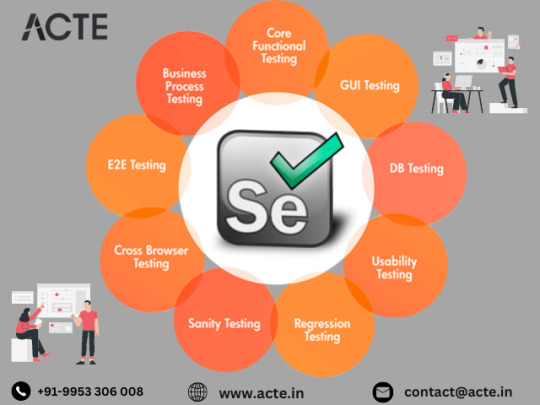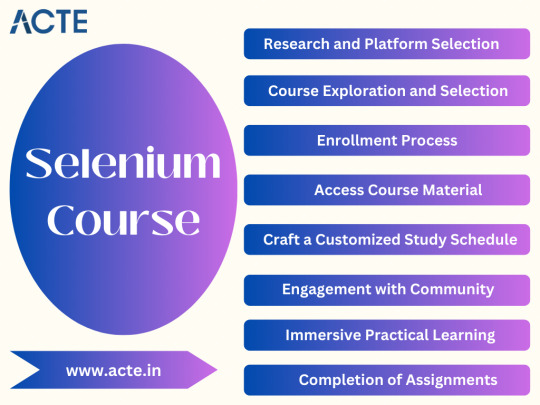#Selenium GRID
Explore tagged Tumblr posts
Text
One of the challenges that we face while testing the application is testing it on different browsers and environments
0 notes
Text
[Docker Selenium Grid] Tắt password LiveView (VNC)
Làm việc với Selenium Grid, có một cái mình ghét phết: LiveView (VNC) password: Continue reading [Docker Selenium Grid] Tắt password LiveView (VNC)
0 notes
Text
Are you looking to improve your Selenium grid setup?
Look no further! Our comprehensive journey across multiple IDEs will help you ace your setup and achieve better results.
Don't miss out on this opportunity to take your Selenium grid setup to the next level!
1 note
·
View note
Text

hello my very helpful assistant 😄 flan's busy cooking up something in her dru- sorry, very ethical laboratory. anyways, here's how you can help her today:
ENTER ONLY ONE OF THE FOLLOWING LABS
LAB ONE
☆ write a brief description of what you want the request to feature (can include smut, kinks, dialogue and more) as well as the driver
LAB TWO
☆ from below - pick a flask, choose a label, select up to four chemical compounds, choose up to three catalysts and call out who the other assistant is (driver: im down to do anyone or the grid or "recently" retired)
☆ NOTE: the final item is very important, so please never forget it, otherwise flan won't be able to start the reaction
SOME REQUESTS WILL BE 18+ and ALL REQUESTS will available under the tag (see below) #chemical attraction ♥︎
all of your concoctions/requests can be made to my asks or inbox (here), and i'll get to producing it as soon as possible.

EXAMPLE REQUESTS
hi flan! with lewis hamilton and a boiling flask labeled with a sticker i am looking to mix together, fluorine, calcium, arsenic with nail polish.
thank you <3

flask
conical: fluff
boiling: smut
round-bottom: hurt/comfort
label
sticker: fic
marker: drabble
washi tape: smau
ribbon: texts
hairtie: combination (please specify)
chemical compounds
hydrogen: "oh, shut up." "you shut up." "make me." "okay, but you might moan a little."
helium: "i'm not the jealous type, but what's mine is mine. end of story."
lithium: "don't kink shame me"
beryllium: "we shouldn’t do this" "you’re absolutely right. we should not do this"
boron: "you're so cute when you pout like this"
carbon: "move my arm is falling asleep"
nitrogen: "the problem is, if i kissed you, i don't think i'd be able to stop."
oxygen: "you've ruined that song now, thanks."
fluorine: "don't talk with your mouth full"
neon: "if you can’t take it, why did you talk back"
sodium: "fucking is a reward, but you haven’t been good.”
magnesium: "is it really that hard to love me?"
aluminium: "why aren't you dating him?" "because i'd destroy him" "he seems like he'd be into that"
silicon: "i know they're just stuffed animals, but it feels like they're watching us"
phosphorus: "you know, i could always get you off here right now"
sulfur: "you deserve so much better than me" "stop lying"
chlorine: "give me a little show"
argon: "why are you being like this?"
potassium: "watch you mouth before i decide to spank your ass"
calcium: "it's going to sound controversial, but i think that went well"
scandium: "oh my god are you actually reading the terms of service?"
titanium: "the next time you pull something like this, i'm telling your mother what we did in vegas that one time"
vanadium: "if you don't like being called a whore, then stop acting like one."
chromium: "everything you own, everything you wear i paid for. so i guess that means i own you."
manganese: "i might have slept with your shirt while you were gone"
iron: "i'm not moving, your lap is comfortable"
cobalt: "please..." "you need to learn to be better with your words, don't you think? tell me what you really want,"
nickel: “are you my cum dump?”
copper: "you're not allowed to touch my pussy"
zinc: "you could've just told me"
gallium: "are you trying to flirt with me?" "is it working?"
germanium: "if i buy it, will you stop pouting?"
arsenic: "you're just mad that that my cock fits perfectly in you now. must be a blow to the ego that we're a perfect match."
selenium: "how long have you been covering/covering up this?"
bromine: "you're like my arm rest'
krypton: "i know i'm warm, but we really have to get up now"
rubidium: "you’re starting another cult. you bitch."
strontium: "it’s broad daylight, if someone looks up they'll see you pressed against the window."
yttrium: "you're not alone i promise"
zirconium: "im sorry but i'm done waiting"
niobium: "i promised to give you something, but i didn't promise it would be an orgasm."
molybdenum: "i'm bad at texting, so i always hope that you're the first one"
technetium: "let me take care of it. let me take care of everything"
ruthenium: "is it a bad time to tell you i have [your phobia]"
rhodium: "im so horrible to you" "no you're not"
palladium: "why is there rope next to the bed"
silver: "i don’t want to be able to walk tomorrow.”
cadmium: "you dumbass, don't ever do that again"
indium: "would you like to explain..." "no, but maybe there is something I could do to make you forget about it?"
tin: "i know for a fact that you can be a hell of a lot louder than that.”
antimony: "after all this time and you still can't look me in the eye"
tellurium: "i can't remember the last time i did something so fun with someone"
iodine: "i was expecting a written apology, but this is so much better"
xenon: "i have a headache and it looks just like you.”
cesium: "stop throwing things at me"
barium: "do you really think you can get away from me?"
lanthanum: "do you trust me" "no" "smart"
cerium: "i like the way your hand fits mine"
praseodymium: "because i care about you"
neodymium: "i trusted you...with everything"
promethium: "if you stay, you'll get hurt too"
samarium: "would you have believed me if i did?"
europium: "don't make promises i know you can't keep"
gadolinium: "can you please just hold me?"
terbium: "can i bother you for a sec?" "you always bother me, but go ahead"
dysprosium: "you cancelled plans for me?"
holmium: "my clothes look better on you that they do on me"
erbium: "i dont like it" "you don't like anything" "well i like you and [you specify]"
thulium: "no tickling, or no kisses"
ytterbium: "did i mean anything to you?"
luteium: "does your daddy know you call me daddy too?"
actinium: "n-no, don't cry. i hate it when you cry"
thorium: "but you have me now"
protactinium: "please don't go"
uranium: "i’m literally naked on your bed and you’re talking about work?”
neptunium: "you're hurt, let me take care of you"
plutonium: "you're staring" "i like seeing you happy"
americium: "stay...please"
curium: "i...i just needed to know you were ok"
berkelium: "you'll back off if you know what's good for you"
californium: "didn't you say we were friends"
einsteinium: "this is why we can't have nice things"
fermium: "not out here please"
catalyst
flan: au [request a specific one]
red pill: sub!character
blue pill: sub!reader
glue: dom!reader
lip balm: dom!character
lemon juice: driver!reader
sand: idiots in love/denial
salt water: crack fic
bath water: size kink
soap: exes to...
bubbles: fix it fic/sickfic
nail polish: daddy kink
shampoo: overstimulation
lotion: possessive/jealous sex
slime: accidentally launching relationship
copper coin: cnc/dubcon
flowers: leaving the window open/door unlocked
silver jewellery: age gap
gold jewellery: miscommunication
rock: neighbours
paper: love triangle
plastic bag: enemies to...
tissue: rivals to...
ink: 100% platonic friendship
foam: found family
water babies: secret admirer
ceramic: forced proximity
yarn: roommates
water: childhood friends to...
fruit: married couple/established relationship
beads: fake relationship
heat: brother's best friend
ice: best friend's brother
bark: body swap
grass: reverse tropes [specify]

© the-flanuer || do not copy, rewrite or translate any of my work on any platform.
#⭑ : my work.ᐟ#the-flaneur#chemical attraction ♥︎#requests#request list#x reader#f1#formula 1#f1 fanfic#f1 texts#f1 imagine#f1 x reader#f1 fluff#f1 smau#f1 smut#lewis hamilton x reader#max verstappen x reader#fluff#smut#charles leclerc x reader#lando norris x reader#oscar piastri x reader#carlos sainz x reader#george russell x reader
77 notes
·
View notes
Text
How Do I Get Certified in Selenium Automation Testing? A Complete Beginner's Guide
👣 Why Choose Selenium Certification?
If you're planning to build a long-lasting career in automation testing, earning a selenium certificate is a smart first step. In today’s tech-driven world, companies demand skilled testers who can automate web apps efficiently—and a certified selenium testing professional stands out. 🎯
Whether you're new to QA or a manual tester looking to upskill, selenium certifications offer a globally recognized edge. These programs validate your ability to use Selenium WebDriver, build robust frameworks, and run automated tests across browsers and platforms.
📚 What is the Selenium Certification Course About?
A comprehensive selenium certification course teaches you all the must-have skills—right from handling Selenium Grid to integrating tools like Jenkins and Maven. Most importantly, it prepares you for the selenium certification exam, so you can confidently prove your expertise.
You’ll learn to:
Automate real-world testing scenarios.
Apply Selenium tools efficiently.
Boost productivity in DevOps pipelines.
This is not just theory—it's a practical foundation that supports actual job requirements and enhances your confidence. ���
💰 What’s the Selenium Certification Cost?
The selenium certification cost varies depending on the provider, but GSDC’s program is competitively priced without compromising quality. Becoming a certified selenium testing professional is an investment—not just in your education but in your future career path. Think promotions, new roles, or even freelance consulting. 📈
🎓 How to Pass the Selenium Certification Exam?
To succeed in the selenium certification exam, consistency is key. Take mock tests, practice daily, and go through every module of the selenium certification course thoroughly.
Once certified, you can proudly show off your selenium certificate—a powerful add-on to your resume that shows employers you're serious about test automation. ✅
🚀 Career Growth After Selenium Testing Certification
Completing your selenium testing certification can lead to exciting career opportunities, including roles like:
Automation Test Engineer
QA Analyst
Selenium Consultant
With a selenium certification, you join the ranks of highly sought-after professionals in tech. This credential shows you're equipped to take on automation challenges in real-world projects.
📎 Final Words
Becoming a certified selenium testing professional opens doors to better jobs, better pay, and a secure career path in QA automation. Start your journey now with the GSDC’s trusted selenium certification course and prepare to shine in your next role. ✨
For More Information: - https://www.gsdcouncil.org/certified-selenium-testing-professional
Contact:- +41 41444851189
🏷 Hashtags
#certifiedseleniumtestingprofessional #seleniumcertifications #seleniumcertification #seleniumcertificationexam #seleniumcertificationcost #seleniumtestingcertification #seleniumcertificate #seleniumcertificationcourse
1 note
·
View note
Text
Revolutionizing Web Testing: A Deep Dive into Selenium's Automation Dynamics
In the rapidly evolving digital arena, the assurance of flawless functionality, optimal performance, and responsiveness of web applications is a non-negotiable aspect of software development. Selenium, an open-source automation framework, emerges as a formidable force in achieving these objectives. In this comprehensive exploration, we will delve into the intricacies of Selenium, unraveling its role in automation, dissecting the components comprising its toolkit, and understanding its profound impact on modern web testing practices.

1. Decoding Selenium: A Core Element of Automation Mastery
At its essence, Selenium represents a suite of tools meticulously crafted to automate web browsers. This automation plays a pivotal role in the testing domain, where the simulation of user interactions is imperative for validating the functionality and performance of web applications. Beyond testing, Selenium significantly contributes to the efficiency and reliability of the software development lifecycle.
2. The Toolbox Essentials: Navigating Selenium's Arsenal
Selenium's toolkit comprises three indispensable components, each serving a distinct purpose in the automation journey.
Selenium IDE:
Selenium IDE, a browser extension, simplifies the recording, editing, and debugging of tests. With a user-friendly interface, testers can effortlessly create and modify test cases.
Selenium WebDriver:
The crux of Selenium lies in WebDriver, a tool facilitating interaction with web browsers through diverse programming languages. This component is instrumental in crafting dynamic and programmable test scripts.
Selenium Grid:
Selenium Grid acts as a scalable solution enabling parallel test execution across multiple machines and browsers. This feature expedites the testing process by distributing test cases effectively.
3. Language Flexibility: Adaptable Automation at its Finest
A standout feature of Selenium is its support for multiple programming languages, including Java, Python, C#, and Ruby. This flexibility empowers testers and developers to harness Selenium's capabilities within their preferred programming language, fostering seamless integration into existing workflows.
4. Cross-Browser Compatibility: Ensuring Uniformity in Diversity
Selenium's prowess shines in its ability to conduct cross-browser testing with efficiency. In the era where web applications must perform consistently across various browsers, Selenium ensures uniformity in testing scenarios across Chrome, Firefox, Safari, and more. This cross-browser compatibility is paramount for delivering a consistent user experience.

5. Dynamic Web Element Handling: Mastering Change
In the dynamic landscape of web development, the adept handling of dynamic web elements stands as a critical testing aspect. Selenium excels in providing robust mechanisms to identify and interact with elements that undergo changes based on user interactions. This adaptability guarantees accurate testing even in scenarios where web elements are subject to modification.
6. Integration with Testing Frameworks: Orchestrating Efficient Test Management
Selenium seamlessly integrates with renowned testing frameworks like JUnit and TestNG. This integration enhances the efficiency of test management, execution, and reporting. Testing frameworks offer a structured approach to test development, simplifying the management, execution, and analysis of test results.
7. Parallel Test Execution: Turbocharging Processes
Selenium Grid emerges as a powerhouse solution for accelerating test execution. By facilitating parallel execution of tests across multiple machines and browsers, Selenium Grid substantially reduces test execution time. This parallelization proves invaluable, especially when dealing with extensive test suites that require swift execution.
8. Community Support and Continuous Advancement: Sustaining an Ecosystem
Selenium thrives on the strength of its community. With a dynamic community of developers, testers, and automation enthusiasts, Selenium undergoes continuous refinement and enhancement. Regular updates, bug fixes, and the introduction of new features ensure that Selenium aligns seamlessly with the ever-evolving web technology landscape.
Conclusion: Selenium as the Cornerstone of Automated Precision
In conclusion, Selenium stands tall as a cornerstone in the realm of automation, particularly in web testing. Its adaptability, cross-browser testing capabilities, integration with testing frameworks, and support for parallel test execution position it as an indispensable tool for ensuring the quality and reliability of web applications.
Whether you're a seasoned tester or a developer navigating the intricacies of web testing, Selenium equips you to streamline your testing processes. Its impact resonates in the delivery of high-quality software, contributing to the seamless user experience expected in the dynamic digital landscape.
As we delve into the myriad facets of Selenium, we uncover its transformative power in reshaping testing practices and fortifying the foundations of robust and reliable web applications. Embrace the influence of Selenium, and let it be your guiding force in the captivating journey of web automation.
4 notes
·
View notes
Text
Streamlining Web Application Testing with Selenium: An In-Depth Exploration
The landscape of web development demands meticulous attention to the seamless functioning of applications across diverse platforms and browsers. Enter Selenium, an open-source framework that has emerged as a cornerstone for automated web application testing. In this blog, we delve into the pivotal aspects and advantages of Selenium tests, shedding light on its significance within the software development lifecycle.

Decoding Selenium Tests: Automated Precision in Testing
Selenium tests stand as automated scripts meticulously crafted using the Selenium framework, a widely embraced open-source tool designed explicitly for web application testing. These scripts represent the pinnacle of automation, meticulously validating web application functionality by replicating user interactions, providing insights akin to real-world user experiences.
Versatility Across Development Ecosystems
Selenium's prowess is evident in its support for multiple programming languages, including Java, Python, C#, Ruby, and more. This adaptability ensures Selenium seamlessly integrates into different development environments, allowing teams to leverage their preferred programming language for automated testing.
Critical Aspects of Selenium Tests
Let's delve into key facets that underscore the indispensable nature of Selenium tests in the testing toolkit:
Cross-Browser Compatibility: Selenium's capability to support a variety of browsers ensures consistent performance across platforms, a crucial factor in delivering a uniform user experience across the digital landscape.
Platform Independence: Selenium's platform-agnostic nature allows it to operate seamlessly on Windows, Linux, and macOS. This flexibility proves advantageous for development teams working in diverse computing environments.
Multi-Language Support: The compatibility of Selenium with multiple programming languages empowers development teams to choose their preferred language. This adaptability fosters collaboration and efficiency within the testing and development processes.
Open Source and Community Support: Selenium's open-source lineage has birthed a robust and supportive community. This collaborative environment ensures continuous development, regular updates, and a plethora of resources for users.
Extensibility and Integration: Selenium effortlessly integrates with various testing frameworks and CI/CD tools, enhancing its capabilities. This seamless integration streamlines the testing process, facilitating efficient automation within continuous integration pipelines.

Dynamic Web Application Support: Selenium excels in the testing of dynamic web applications that leverage technologies like AJAX and JavaScript. Its ability to interact with and validate dynamic elements ensures a comprehensive evaluation of modern web applications.
Parallel Test Execution: Selenium Grid facilitates parallel test execution on multiple machines and browsers simultaneously. This feature significantly reduces overall test execution time, proving invaluable for testing large suites of test cases efficiently.
Headless Browser Testing: Selenium's support for headless browser testing is particularly beneficial in scenarios where a graphical user interface is unnecessary. This feature streamlines testing in background processes or on servers, contributing to faster and more efficient testing.
Conclusion: Elevating Software Quality through Selenium Precision
In conclusion, Selenium tests emerge as a linchpin in the software development lifecycle, automating the testing of web applications and contributing to enhanced efficiency and accelerated feedback cycles. Professionals aspiring to deepen their understanding and proficiency in utilizing Selenium for effective web application testing can embark on dedicated training programs. Embrace the transformative power of Selenium and unlock a realm of possibilities in the domain of web automation.
2 notes
·
View notes
Text
Discovering the Building Blocks of Selenium in Simple Terms

Selenium IDE (Integrated Development Environment)
Think of Selenium IDE as a special notepad for recording what you do on a website. It’s like a diary that writes down the things you do on the internet. This is a simple way to start testing websites. Selenium IDE (Integrated Development Environment) is the simplest tool in the Selenium Suite. It is a Firefox add-on that creates tests very quickly through its record-and-playback functionality. This feature is similar to that of QTP. It is effortless to install and easy to learn.
Selenium WebDriver
Now, let’s get a little technical. WebDriver is like the engine that makes your testing happen. It’s a set of tools for different computer languages, like Java or Python. These tools help you do things on a website, like clicking buttons or filling out forms, just like a real person. Selenium WebDriver is a browser automation framework that accepts commands and sends them to a browser. It is implemented through a browser-specific driver. It directly communicates with the browser and controls it. Selenium WebDriver supports various programming languages like Java, C#, PHP, Python, Perl, and Ruby.
Selenium Grid
When you want to test on different internet browsers at the same time, that’s where Selenium Grid comes in. It helps you spread your tests across different computers to make sure everything works on different browsers and devices. Hub is a server that accepts access requests from the WebDriver client, routing the JSON test commands to the remote drives on nodes.
Selenium Client Libraries
Remember those tools I mentioned earlier? Client libraries are like special helpers that let you use those tools in your favourite computer language. They help you talk to WebDriver. So, whether you like Java, Python, or something else, you can use Selenium without any problems. The Selenium Client Library consists of various language libraries for Java, Ruby, Python, and other supported languages. JSON denotes Java script Object Notation.
Third-party frameworks and tools
Selenium can do even more when you use it with other tools. These tools help you organise your tests and make them easier to understand. They can also help you test mobile apps and other things. Selenium frameworks based on the functional approach are classified into three main types: Data-driven framework. keyword-driven framework. Hybrid framework.
Browsers and Web Drivers

Selenium is a great tool for testing websites. Its parts, from Selenium IDE for recording what you do to WebDriver for doing things on websites and Selenium Grid for testing on different browsers, work together to make testing easier. With Selenium, you can make sure your websites work well on different browsers and devices. So, next time you want to test a website, remember that Selenium is there to help you. Happy testing! To dive deeper into Selenium and unlock its full potential, consider reaching out to ACTE Technologies, a leading provider of certifications and job placement opportunities in the field of Selenium. Their experienced staff can guide you on your journey to mastering this versatile tool.
2 notes
·
View notes
Text
Cross-Browser Testing Made Easy

Cross browser testing is a critical component of software development, ensuring that web applications perform consistently across various browsers and devices. This process is essential for delivering a seamless user experience, boosting customer retention, and preventing revenue loss due to browser-specific issues. However, traditional methods of cross-browser testing can be time consuming and resource intensive, involving manual testing or managing complex infrastructure like Selenium Grids.
Genqe revolutionizes cross browser testing by leveraging AI and machine learning to automate the process. With Genqe, you can create a single test flow that works across all browsers, eliminating the need for multiple scripts and reducing maintenance efforts. The platform supports parallel test execution, allowing you to run tests simultaneously across multiple browser versions and operating system configurations. This not only accelerates test execution times but also enhances productivity by discovering bugs more quickly.
Why is Cross-Browser Testing Important?
Cross-browser testing involves verifying that your website or application works consistently on all modern browsers, operating systems, and devices. This includes validating UI elements, runtime performance, and functionality for different screen sizes and devices.
Here are a few key reasons why cross-browser testing is critical:
Enhanced User Experience: Users expect smooth navigation regardless of whether they’re using Chrome, Safari, Firefox, or Edge. Any inconsistency can lead to frustration and churn.
Broader Audience Reach: Different users have different preferences when it comes to browsers and devices. Testing ensures your application performs flawlessly across these varied platforms.
Avoid Costly Errors: Browser-specific issues can derail launches and cost companies both revenue and customer trust.
Maintain Brand Credibility: A site that doesn’t function as expected can harm your reputation, especially if your audience encounters preventable bugs.
Traditional manual cross-browser testing is labor-intensive and prone to human error. Plus, maintaining test environments for multiple browsers can demand significant resources. That’s why automated solutions like Genqe are transforming how teams approach this challenge.
How Genqe Makes Cross-Browser Testing Seamless
Genqe takes the complexity out of cross-browser testing with its AI-powered approach. By automating test workflows and introducing intelligent features, the platform simplifies testing for teams of all sizes. Here’s what sets Genqe apart:
1. Write Once, Run Everywhere
Creating separate scripts for every browser can be exhausting. With Genqe, you can write a single test that works across all supported browsers. Its AI-driven platform understands application elements and adapts to variations, sparing you the headache of managing individual test flows for each browser.
2. Parallel Testing
Time is always a limiting factor in QA processes. Genqe enables teams to execute tests in parallel across multiple browsers, devices, and operating systems. This dramatically reduces test execution time while ensuring broad compatibility coverage.
3. Self-Healing Tests
One of Genqe’s most innovative features is its self-healing test capability. Even as your application evolves, Genqe’s AI recognizes changes in UI or functionality and automatically updates tests without requiring manual intervention. This ensures your tests remain robust even in dynamic environments.
4. Advanced Diagnostics
When a test fails, QA engineers often spend hours debugging. Genqe makes this easier through detailed reports, runtime error tracking, and screenshots of failures. By pinpointing browser-specific issues, teams can resolve problems faster.
5. Cloud-Based Scalability
Genqe operates entirely on the cloud, meaning there’s no need for complex infrastructure like Selenium Grids. Whether you’re testing for a small project or a large enterprise application, the platform scales effortlessly to match your needs.
6. Seamless Integrations
Genqe integrates with popular tools such as Jira, Slack, Jenkins, and TestRail. These integrations help streamline workflows, enabling better collaboration between testing and development teams.
How to Achieve Cross-Browser Testing with Genqe
Here’s a step-by-step guide to leveraging Genqe for cross-browser testing:
Step 1: Configure Your Test Case
Use Genqe’s intuitive interface or natural language processing (NLP) to create your test case — starting with Chrome. Begin with scenarios like “Validate login form works in Chrome” to ensure stability in a widely used, consistent environment before expanding to other browsers like Safari.
Step 2: Select Your Browsers
From Genqe’s extensive library, choose the browsers, browser versions, and operating systems you want to test. Whether you need to validate compatibility on Edge, Firefox, or mobile Safari, everything is available at your fingertips.
Step 3: Execute Parallel Tests
Launch your tests simultaneously on multiple browser-environment combinations. Genqe’s cloud infrastructure ensures tests run quickly and without bottlenecks, regardless of scale.
Step 4: Analyze Results
After the tests are completed, Genqe generates detailed reports, providing insights into runtime errors, UI differences, and performance metrics for each browser and device. Use this to identify and fix failing workflows with ease.
Step 5: Optimize and Reiterate
With Genqe’s self-healing and adaptive capabilities, continuously optimize your test cases as your application evolves. Every round of testing makes future testing cycles smoother and faster.
Key Tip for Teams New to Automation
If you’re transitioning from manual testing, start with simple workflows before scaling to more complex scenarios. Genqe’s ease of use ensures a gradual learning curve for new users.
What Makes Genqe Different?
While other tools exist in the automated testing space, Genqe offers unique benefits that truly set it apart:
AI-Driven Flexibility
Unlike traditional testing tools, Genqe uses machine learning to adapt to UI changes and learn from past tests. This ensures unmatched reliability even in agile development environments.
99.96% Accuracy
Genqe delivers industry-leading accuracy rates, ensuring that tests only flag real issues. This reduces the noise that QA teams often face with traditional tools.
Cost-Effective Innovation
By automating repetitive tasks and introducing AI-driven digital workers, Genqe reduces manual effort, allowing QA teams to focus on high-impact projects.
Common Use Cases for Genqe
Genqe is ideal for various testing needs, but it especially excels in these scenarios:
E-commerce Platforms
Ensure dynamic shopping carts and payment pages function seamlessly across browsers.
SaaS Applications
Validate dashboards, user permissions, and API integrations on multiple devices.
Responsive Design Validation
Test websites for consistent performance on both desktop and mobile browsers.
Global Audience Applications
Verify multilingual interfaces and time zone-sensitive workflows without duplicating tests.
Future-Proof Your Testing Strategy
Cross-browser compatibility is not just a “nice-to-have” feature anymore; it’s a business imperative. By adopting Genqe for cross browser testing, teams can significantly reduce maintenance efforts and accelerate test execution. The platform’s AI-powered testing capabilities ensure that tests are robust and adaptable, even in dynamic environments. Whether you’re a small startup or a large enterprise, Genqe offers a scalable solution that simplifies cross browser testing, allowing you to focus on delivering exceptional user experiences without the hassle of traditional methods.
Genqe’s approach to cross browser testing is about transforming the way teams work. By automating repetitive tasks and providing real-time insights, Genqe empowers developers and QA engineers to release applications faster and with higher quality. The platform’s ability to handle complex test automation ensures that cross browser compatibility is no longer a challenge but a standard practice in software development.
Genqe can be a strategic partner for teams seeking to streamline their testing processes and deliver high standard applications. With our AI first approach, Genqe makes cross browser testing accessible, efficient, and effective for all users, regardless of their technical background. Whether you’re a current customer or considering a move to Genqe, the platform is designed to enable teams to thrive in competitive environments. Genqe positions you to focus on innovation, cut inefficiencies, and confidently build applications that work everywhere.
Experience industry-leading cross-browser testing today. Schedule a Genqe demo now or speak to your customer experience team.
0 notes
Text
Selenium: The Cornerstone of Modern Web Automation Testing
In our increasingly digital world, websites are no longer just static information hubs. They are complex, interactive platforms powering essential services such as digital banking, e-learning, online shopping, and enterprise tools. As the role of web applications continues to expand, maintaining their reliability, efficiency, and intuitive design is more critical than ever. Whether managing a SaaS product or a dynamic e-commerce site, delivering a smooth user experience is inseparable from a robust and functional web interface.
Selenium: More Than Just a Single Tool
Selenium is often misunderstood as a standalone automation tool. In reality, it is a suite of specialized components, each addressing specific needs in browser-based automation. This flexibility allows teams to tailor their automation strategy according to their skill levels and project complexity.
The Selenium suite comprises:
Selenium IDE: A user-friendly browser extension for Chrome and Firefox that enables record-and-playback testing. It’s great for quick test creation, demos, or for those new to automation.
Selenium WebDriver: The core engine that offers direct interaction with web browsers through a rich API. It supports multiple languages and allows simulation of real-world user behavior with high precision.
Selenium Grid: Designed for distributed execution, it enables running tests in parallel across various browsers, operating systems, and machines, significantly reducing test duration and enhancing coverage.
This structure supports a progressive approach starting with simple test recordings and scaling up to advanced, enterprise-grade test frameworks. Enhance your web automation skills with our comprehensive Selenium Course Online, designed for beginners and professionals to master real-time testing techniques.

What Sets Selenium Apart in the Automation Landscape
Selenium remains a top choice among automation frameworks due to its open-source nature, adaptability, and strong community support. Its compatibility with several programming languages including Java, Python, JavaScript, and C# makes it highly versatile.
Notable strengths of Selenium include:
Cross-browser compatibility (Chrome, Firefox, Safari, Edge, etc.)
Cross-platform support for Windows, macOS, and Linux
Integration readiness with DevOps tools like Maven, Jenkins, Docker, and CI/CD pipelines
Large and active community, ensuring continuous enhancements and robust documentation
These features make Selenium an ideal solution for Agile and DevOps-driven environments where flexibility and scalability are essential.
Selenium WebDriver: The Automation Power Core
Selenium WebDriver is the most powerful and widely used component of the suite. It communicates directly with browsers using their native automation APIs, which leads to faster execution and more stable tests.
With WebDriver, testers can:
Simulate user actions such as clicking, typing, scrolling, and navigation
Interact with dynamic content and complex UI elements
Handle browser alerts, multiple tabs, and asynchronous behaviors
Use sophisticated waiting strategies to reduce flakiness
Its language flexibility and ease of integration with popular testing frameworks make it suitable for both functional and regression testing in modern applications.
Selenium Grid: For Fast, Parallel, and Scalable Testing
As projects grow in scale and complexity, running tests sequentially becomes impractical. Selenium Grid addresses this by supporting parallel test execution across different systems and environments.
Here’s how it works:
A central Hub routes test commands to multiple Nodes, each configured with specific browser and OS combinations.
Tests are automatically matched with suitable Nodes based on the desired configuration.
This setup enables:
Faster test cycles through concurrency
Expanded test coverage across platforms and browsers
Seamless scalability when integrated with Docker or cloud environments
Selenium Grid is particularly beneficial for CI/CD pipelines, enabling frequent and reliable testing in short time frames.
Challenges in Selenium and How to Overcome Them
Despite its many advantages, Selenium presents a few challenges. Fortunately, these can be addressed effectively with best practices and complementary tools.
1. Test Instability
Tests may fail unpredictably due to timing issues or dynamic content. Use robust locators, implement explicit or fluent waits, and add retry mechanisms where necessary.
2. High Maintenance Overhead
Frequent UI changes can break test scripts. Adopt the Page Object Model (POM), centralize selectors, and design modular, reusable components.
3. Lack of Native Reporting
Selenium does not include reporting features by default. Integrate reporting tools such as ExtentReports, Allure, or custom HTML reporters to visualize test outcomes and logs.
4. No Built-in Test Management
Selenium focuses on execution, not planning or tracking. Pair Selenium with test management tools like TestRail, Zephyr, or Jira plugins to organize and track testing efforts. Proactively addressing these issues leads to more reliable, maintainable, and scalable automation frameworks. Kickstart your career with our Best Training & Placement Program, offering expert-led sessions and guaranteed job support for a successful future in tech.

Selenium’s Strategic Role in Modern QA
As the software industry embraces continuous integration and delivery, quality assurance is shifting earlier in the development lifecycle, a practice known as Shift Left. Selenium supports this transition by enabling early and continuous automation.
Key benefits in modern workflows include:
Integration with CI tools like Jenkins, GitHub Actions, or Azure DevOps
Easy version control and code collaboration via Git
Support for data-driven testing, allowing validation of multiple scenarios using external data sources
This makes Selenium not just a testing tool, but a strategic partner in achieving high-quality, fast-paced software releases.
Conclusion
Selenium continues to play a crucial role in modern web automation. Its blend of flexibility, scalability, and open-source accessibility makes it a go-to framework for both startups and large enterprises. Whether you are verifying basic functionalities or managing a complex automation suite, Selenium equips you with the tools to build efficient and dependable tests. By following best practices such as structured test architecture, modular design, and integrated reporting Selenium can elevate your quality assurance efforts into a long-term strategic asset. As web technologies evolve and user expectations rise, Selenium will remain at the forefront of automated testing solutions.
0 notes
Text
Selenium vs Cypress vs Playwright: Best Tool for 2025?

As software delivery speeds accelerate, QA professionals need the right test automation tools to keep pace. In 2025, three names dominate the conversation: Selenium, Cypress, and Playwright. Each framework brings unique strengths in automation testing, cross-browser testing, and CI/CD integration. But which one should you master this year? Let’s dive in.
Why Automation Testing Matters in 2025?
With the rise of DevOps and continuousintegration, manual testing alone can no longer ensure fast, reliable releases. Testautomation empowers teams to catch regressions early, maintain high code quality, and accelerate deployment cycles. By 2025, organizations expect QA engineers to:
Integrate tests seamlessly into CI/CD pipelines.
Leverage cloud-based test grids and parallel execution.
Debug failures with rich traceability and reporting.
Mastering a modern automation tool is no longer optional - it’s essential for any QA career.
Selenium: The Enterprise Workhorse
Selenium WebDriver has been the cornerstone of UI automation for over a decade. Its mature ecosystem, language flexibility (Java, Python, C#, Ruby, JavaScript), and robust cross-browser testing support make it ideal for large-scale enterprise projects.
Key highlights:
Language-agnostic bindings let you write tests in your preferred stack.
Seamless integration with Selenium Grid for parallel execution.
Rich community libraries and extensions for advanced reporting.
Large talent pool and extensive documentation.
When to choose Selenium: If you’re working on a complex enterprise application with diverse browser coverage requirements and need a battle-tested, vendor-neutral solution.
Cypress: The Developer’s Favorite
Launched in 2015, Cypress has quickly risen to prominence among JavaScript-centric teams. Its “runs-in-browser” architecture offers lightning-fast execution and out-of-the-box debugging with time-travel snapshots.
Key highlights:
Native support for JavaScript and TypeScript.
Automatic waiting and retry-ability, reducing flakiness.
Built-in dashboard (paid) for parallel runs, insights, and video recordings.
Simple setup, no WebDriver overhead.
When to choose Cypress: If your stack is JavaScript/TypeScript, you favor a developer-friendly workflow, and you value real-time debugging over broad multi-language support.
Playwright: The Next-Gen Contender
Playwright, developed by Microsoft, builds on lessons from Puppeteer and brings cross-browser automation under one roof. It supports Chromium, Firefox, and WebKit (Safari) with a single API, as well as native parallelism and a powerful trace viewer for debugging.
Key highlights:
Multi-language support (JavaScript, Python, C#, Java).
Auto-waiting and network interception for resilient tests.
Native parallel execution without extra grid setup.
Detailed trace logs and screenshots for in-depth analysis.
When to choose Playwright: If you need modern UI automation with native parallelism, out-of-the-box multi-browser support, and advanced debugging capabilities.
Trends to Watch in 2025
1. Shift-Left Testing – Embedding test automation earlier in the development cycle to catch defects sooner.
2. AI-Powered Testing – Leveraging machine learning for test generation, visual validation, and self-healing scripts.
3. Cloud-Native Test Execution – Running massive parallel suites on cloud grids to minimize feedback time.
4. Low-Code/No-Code Automation – Democratizing testing for non-technical stakeholders with visual test builders.
Regardless of which tool you choose, staying current with these trends will supercharge your QA career.
Which Tool Is Right for You?
Choose Selenium if you need a language-agnostic framework with enterprise-grade scalability and community backing.
Choose Cypress if you work primarily in JavaScript/TypeScript and want the fastest, flakiest-proof, developer-friendly experience.
Choose Playwright if you want a modern, multi-language tool with native parallelism and full-featured debugging.
Ready to Elevate Your QA Skills?
At TestoMeter, we offer hands-on courses covering Selenium WebDriver, Cypress testing, and Playwright automation, complete with real-world projects, small batch sizes, and expert mentorship.
Want to become a QA expert? Visit Testometer and get started!
0 notes
Text
[TIL] Kill Selenium Grid sessions
Dạo này tớ có cái project làm crawling, sử dụng selenium grid. Thi thỏang bị một vấn đề: session không tự close, dẫn tới nó cứ treo ở đó, làm cái queue bị tắc. Đầu tiên thì mình workaround bằng cách down instance docker của Selenium Grid xuống, rồi start lại. Cơ mà làm thế mất thời gian quá. Thử google thì có cách gọn hơn: dùng cURL: curl -X "DELETE" http://<your grid…
0 notes
Text
Shaping the Future of QA Test Automation in 2025
As software delivery accelerates, QA test automation is evolving into a strategic driver of product quality. In 2025, the focus is shifting from merely automating tests to enabling smarter, faster, and more resilient testing at scale. AI and machine learning are now playing a central role—powering self-healing tests, predictive analytics, and intelligent test generation to reduce flakiness and maintenance efforts.
Low-code/no-code automation tools are empowering non-technical testers to contribute, breaking silos and expanding automation coverage. Meanwhile, DevOps and CI/CD pipelines are demanding tighter integration, where automated tests trigger instantly with every build, across diverse environments.
Cloud-based and containerized testing platforms like Selenium Grid on Kubernetes or device farms for mobile testing are becoming standard for scalability and flexibility. Also, there’s a growing emphasis on shift-left and shift-right testing—embedding QA from the earliest stages and continuing into production monitoring.
The future is also about test data management, security testing, and performance under real-world loads. QA professionals must now blend skills in development, analytics, and business understanding.
In 2025, automation isn’t just about speed—it’s about intelligent quality engineering that aligns with agile business goals.
#automation testing#qa automation testing#test automation#api testing#test automation framework#test automation tools#automated QA testing#qa automation tester#automated qa testing#test automation services
0 notes
Text
How Do I Get Certified in Selenium WebDriver with GSDC? Explained Simply
Introduction
Ever feel like you're stuck in your QA role while everyone else is jumping ahead? We've all been there. That’s why getting certified—especially as a certified selenium testing professional—might be your ticket to better job opportunities, more confidence, and yes, a better paycheck. 💼
Let’s walk through exactly how you can do that with the GSDC Selenium Certification—without the jargon and stress.
🚀 Why Go for a Selenium Certification?
You’ve probably already heard of Selenium—it’s the go-to framework for automating web applications. But knowing how to use it and showing you’re officially certified are two different things. When you become a certified selenium testing professional, you don’t just learn the tool—you prove your mastery of it.
Having selenium certifications on your resume shows employers that you’re serious, skilled, and ready to automate their testing workflows like a pro.
📚 What's in the Course?
The selenium certification course from GSDC is made for people like us—working professionals who want to learn, grow, and get certified without turning their lives upside down.
You’ll cover:
WebDriver basics (great for beginners)
Framework design (yes, you'll build one!)
TestNG, Maven, Jenkins, and even Selenium Grid
Real-world use cases to get your hands dirty
By the end of the course, you’ll be fully ready to tackle the selenium certification exam and walk away with your shiny new selenium certificate.
💰 Let’s Talk About the Cost
Now, here’s a question we all ask: “What’s the selenium certification cost?” You’ll be glad to hear GSDC keeps it affordable. You’re looking at around $100 (with occasional bundles that make it even cheaper). For the career value it brings, it’s a total win.
Think of it this way: a small one-time investment in a selenium certification course could lead to long-term salary bumps and job security. ���
📝 The Exam Process
Don’t worry, the selenium certification exam isn’t a trap. GSDC gives you practice materials, access to mock tests, and even a capstone project to prep. And here’s the kicker—you get two attempts to pass, and if you don’t make it, there’s a money-back guarantee.
Once you pass? You get a lifetime-valid selenium certificate you can proudly flash on LinkedIn, your resume, or that fancy office bulletin board. 🏆
💼 Real Career Boost
Becoming a certified selenium testing professional is more than a title—it’s a game changer. With a solid selenium certification under your belt, you open doors to roles like Automation Test Engineer, QA Lead, or even SDET.
In fact, many hiring managers use selenium certifications as a filter during recruitment. If you’ve got one, you instantly stand out. Whether you're looking for a new job or aiming for that long-overdue promotion, this credential can push your career forward.
💡 Final Thoughts
If you’ve been waiting for a sign to level up in your QA journey, this is it. With the GSDC selenium certification course, you get structure, flexibility, and career growth in one package. Get that selenium certificate, own your expertise, and start saying yes to better job offers, interviews, and opportunities.
So what are you waiting for? It’s time to become a certified selenium testing professional—your future self will thank you. 😉
For More Information: - https://www.gsdcouncil.org/certified-selenium-testing-professional
Contact:- +41 41444851189
#CertifiedSeleniumTestingProfessional #SeleniumCertifications #SeleniumCertificate #SeleniumTestingCertification #SeleniumCertificationExam #SeleniumCertificationCost #SeleniumCertificationCourse #CareerWithSelenium #AutomationTesting #QAJobs
0 notes
Text
Level Up Your Selenium Skills: The Ultimate Course for Test Automation
Are you looking to enhance your test automation skills and become a proficient Selenium user? Look no further! In this article, we will introduce you to the ultimate course that can help you level up your Selenium skills and take your test automation abilities to new heights. Whether you are a beginner or have some prior experience with Selenium, this course is designed to cater to all skill levels. So, let's dive into the details and explore the exciting journey of becoming a Selenium pro!

Why Test Automation Education Matters
In today's rapidly evolving IT industry, staying ahead of the curve is crucial for success. With software systems becoming increasingly complex, manual testing alone cannot keep up with the pace of development. Test automation has become a necessity to ensure the efficiency, accuracy, and scalability of testing processes.
By investing in test automation education, you empower yourself with the knowledge and skills required to excel in the competitive job market. Test automation specialists are in high demand, and having expertise in Selenium can open numerous career opportunities. Furthermore, by leveraging Selenium, you can save time, reduce effort, and deliver reliable results, making it an indispensable tool for any software tester.
The Power of Selenium in Test Automation
Selenium is a powerful open-source framework that has revolutionized the world of test automation. It provides robust capabilities for automating web browsers and enables testers to perform cross-browser testing effortlessly. With Selenium, you can write automation scripts in various programming languages like Java, Python, C#, and more. Its vast ecosystem of plugins and frameworks further extends its potential, making it the go-to choice for many automation professionals.
Key Features of Selenium
Selenium boasts a rich set of features that make it highly suitable for test automation. Some of the notable features include:
Cross-Browser Compatibility: Selenium allows you to test web applications across multiple browsers, ensuring your website functions flawlessly regardless of the platform.
Multi-Language Support: Selenium supports multiple programming languages, enabling you to choose your preferred language based on your comfort and project requirements.
Fast and Reliable: Selenium empowers you to execute tests swiftly and consistently, providing accurate results while maintaining the integrity of your automation suite.
Flexible and Extensible: Selenium's architecture allows you to integrate it with various frameworks and tools, providing flexibility in designing automation solutions that fit your specific needs.
Parallel Execution: Selenium allows you to run tests in parallel, significantly reducing execution time and enhancing productivity.
Community Support: Selenium enjoys a vast user community, providing ample resources, tutorials, and support when encountering challenges during automation implementation.

The Ultimate Course for Leveling Up Your Selenium Skills
Now that you understand the significance of Selenium in test automation, let's explore the ultimate course that can skyrocket your skills in this domain. This comprehensive course is designed by industry experts with extensive experience in test automation using Selenium. It covers everything from the fundamentals to advanced topics, ensuring a comprehensive and well-rounded learning experience.
Course Curriculum Highlights
Here's a glimpse of what you can expect to learn from this ultimate Selenium course:
Introduction to Selenium and its various components
Understanding Selenium WebDriver and its core functionalities
Hands-on exercises to master Selenium IDE and Selenium Grid
In-depth exploration of best practices for test automation using Selenium
Utilizing TestNG for efficient test case management and optimization
Advanced techniques for handling dynamic elements, AJAX, and other challenging scenarios
Integrating Selenium with frameworks like JUnit and Cucumber for improved test reporting and maintenance
Leveraging Selenium with Continuous Integration tools like Jenkins for seamless integration into the development pipeline
Exploring Selenium's compatibility with cloud platforms for distributed test execution
Target Audience and Prerequisites
Whether you are a beginner stepping into the world of test automation or a seasoned professional aiming to enhance your Selenium skills, this course caters to all skill levels. However, having a basic understanding of programming concepts and web technologies will be beneficial in grasping the core concepts effectively.
In conclusion, if you are looking to take your test automation skills to the next level, investing in the ultimate Selenium course at ACTE Technologies is the perfect choice. With Selenium's powerful capabilities and the comprehensive curriculum of this course, you will acquire the knowledge and expertise needed to excel in the field of test automation. So, why wait? Embark on this exciting journey and empower yourself with the skills that will set you apart in the competitive IT industry. Level up your Selenium skills and unlock endless opportunities!
8 notes
·
View notes
Text
Disclosing Selenium Expertise: Handling the Web Automation Landscape
Introduction: Unraveling Selenium's Potential
Selenium, a versatile open-source framework, takes center stage in the realm of automating web applications. Tailored for testers and developers, it arms them with essential tools and libraries, streamlining web testing across diverse platforms. Delving into Selenium's capabilities is made even more impactful through Selenium Training in Pune. This training empowers individuals with the skills and knowledge to unlock the full potential of Selenium, enabling them to adeptly tackle web automation challenges and contribute significantly to their fields.

Understanding the Dynamics of Selenium Automation Testing: A Swift Overview
1. Purpose of Selenium: Elevating the Landscape of Web Application Testing
At its essence, Selenium stands as an automation powerhouse for testing web applications. Testers leverage its capabilities to script interactions in languages like Java or Python, replicating user actions and engagements with web elements.
2. Key Features: Navigating the Strengths of Selenium
Cross-Browser Compatibility: Seamlessly supporting browsers such as Chrome, Firefox, Safari, and Edge, ensuring consistent behavior across diverse platforms.
Programming Language Support: Accommodating Java, Python, C#, Ruby, providing versatility for testers and developers.
Parallel Execution: Unlocking the potential for concurrent test runs, amplifying overall testing efficiency.
Integration with Frameworks: Seamlessly integrating with renowned frameworks like TestNG and JUnit, delivering advanced test management capabilities.

3. Components of Selenium: Unveiling the Toolkit's Arsenal
Selenium IDE: A browser extension facilitating the recording and playback of interactions, ideal for beginners. To grasp the full potential of Selenium and master the art of web automation, consider enrolling in the Top Selenium Online Training.
Selenium WebDriver: Empowering direct interaction with browsers using various programming languages.
Selenium Grid: Facilitating parallel test execution across machines and browsers, optimizing testing resources.
4. How Selenium Operates: Behind the Scenes Mastery
Selenium operates through commands, interacting with web elements. Test scripts, crafted in a programming language, execute actions like button clicks and text entries. The WebDriver acts as a vital bridge, connecting these scripts with the browser, breathing life into automation.
In the domain of web application testing, Selenium emerges as a game-changer, offering a user-friendly framework to craft robust automated tests. Whether you don the hat of a tester or a developer, Selenium extends the flexibility and cross-browser compatibility necessary to elevate your web application testing endeavors.
In essence, Selenium simplifies the testing landscape, guaranteeing the functionality and quality of web applications through the potent force of automation. As you embark on your Selenium journey, embrace the efficiency and effectiveness it brings to the dynamic world of web application testing.
2 notes
·
View notes